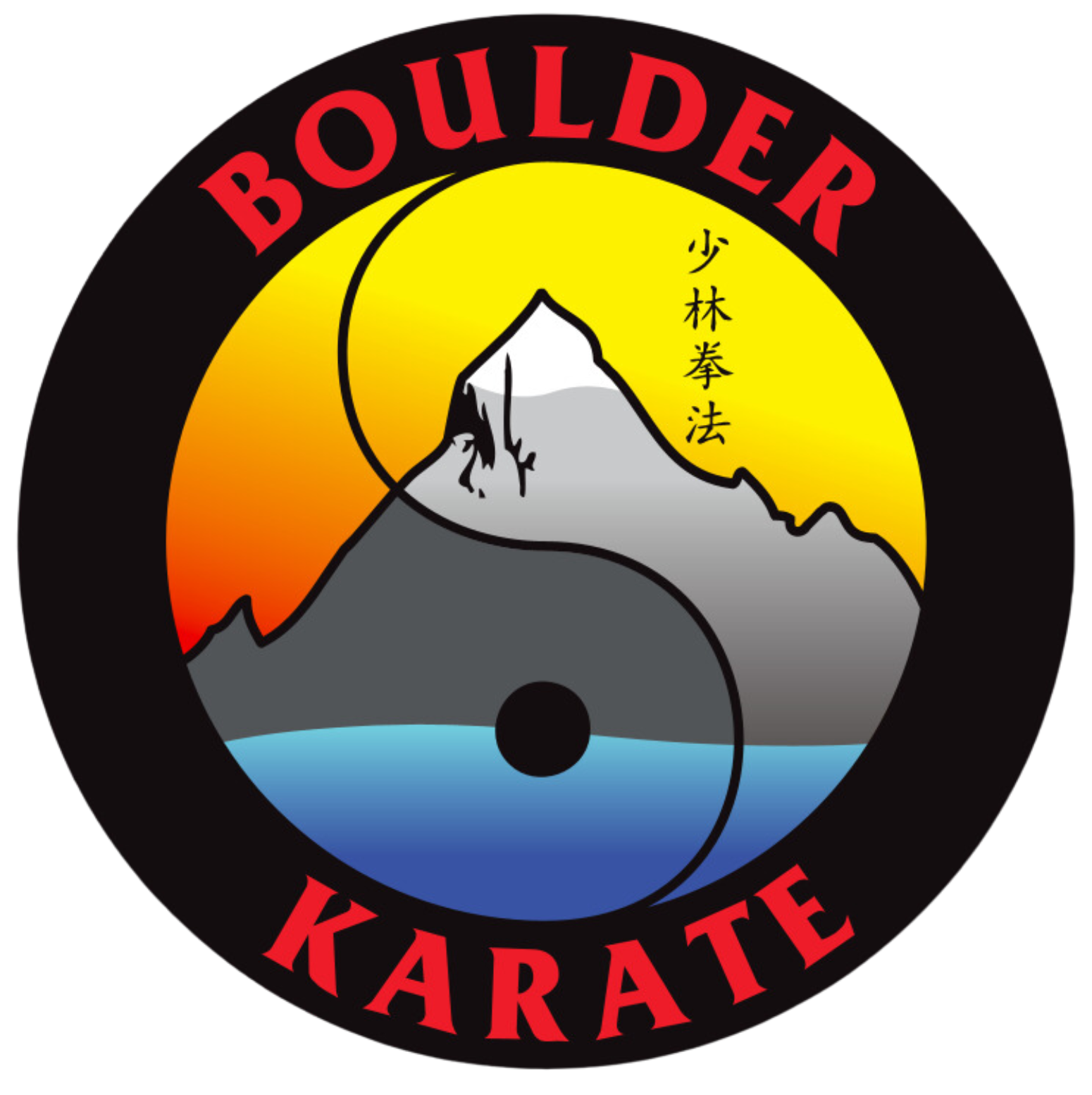Shaolin Kempo
The style of martial arts we proudly study is called Shaolin Kempo. “Shaolin” is Chinese for “young forest,” where Shaolin Kung Fu originated. “Kempo” is Japanese for “law of the fist.”
Shaolin Kempo combines the circular, fluid motion of Chinese Kung Fu and the linear, powerful movements of Japanese Karate. It is a highly effective, practical art for street self-defense. In addition, it implements joint manipulations and grappling tactics of Jujutsu.
Shaolin Kempo develops all ranges of combat: long, middle, and close. It also utilizes all four ways of fighting: striking, kicking, felling, and grappling, unlike most other martial arts that focus on just one or two of these.
Training consists of numerous fun and practical methods, including classical basics, striking pads and heavy bags, self-defense techniques, sparring, and kata (forms). Through the training in Shaolin Kempo, students will develop the Five Shaolin Animal styles, which encompass different body types and fighting tactics: the Tiger, Dragon, Leopard, Crane, and Snake.
The depth of Shaolin Kempo keeps it exciting and mentally stimulating for years upon years. It is not uncommon for a black belt practitioner to realize new, advanced concepts about basic moves they learned at the early ranks!
Shaolin Kempo
A BRIEF HISTORY
Origins and Early Development
The Martial arts have been practiced and studied for centuries. Many different styles and philosophies have developed as martial arts spread around the world. This is an account of Kempo’s history, starting from approximately one hundred years ago.
Many Chinese and Japanese families moved to Hawaii in the early 1900s. As a result, Americans had much greater access to Eastern martial arts knowledge than ever before. The art of Kempo, as we practice it today, started with a man named James Mitose.
Mitose, a Japanese martial artist, began teaching Kempo in Hawaii around 1939. By 1942, he had set up the “Official Self-Defense Club,” where he taught Americans and revealed secrets of self-defense he had learned in Japan. Martial arts weren’t as popular as they are today, so instead of training at a dojo, Mitose’s Club met at local gyms and churches for classes.
Evolution of American Kempo
William Kwai Sun Chow began training under Mitose in 1942. Interested in the practicality, he often tested his techniques in street fights. Chow was lightning fast, earning him the nickname “Thunderbolt,” and he became one of only five people to be awarded a Black Belt under Mitose.
By 1947 Chow was teaching all classes at the Official Self Defense Club. In 1949 he started teaching on his own at the local YMCA, and many of the students followed him. Several students of Chow are responsible for bringing Kempo to the States, including Ed Parker and Victor “Sonny” Gascon.
Expansion and Contributions
Ed Parker started training with Professor Chow in 1949 and earned his Black Belt in 1953. The following year, Parker opened the first “Americanized” karate school in Provo, Utah. In 1956 Parker moved to California and opened a dojo in Pasadena. He quickly became well-known in Hollywood and taught famous actors like Elvis Presley.
Kempo also found its way to the States through another source. In 1950 Victor “Sonny” Gascon started training in Hawaii under one of Chow’s Black Belts, John Leoning. Gascon and Leoning soon moved to Los Angeles and each opened a Kempo dojo. Together they created what we know today as Kata #1-5 and Combinations #1-13, 22, and 26.
The Legacy Continues
In 1961 George Pesare started studying under Gascon. Two years later, Pesare opened a dojo in Rhode Island, which helped spread Kempo to the East Coast. He created Kata 6 and introduced the Stature of the Crane, a form he modified from the Karate form Rohai.
Soon after Pesare opened his dojo, Nick Cerio started taking classes with him. Cerio had some prior training in martial arts but developed a true passion for Kempo. In 1966 Cerio earned his Black Belt under Pesare.
Kempo spread like wildfire along the East Coast, largely due to Cerio’s efforts. Subsequently, a young martial artist named Fred Villari sought out Cerio to learn Kempo and began training under him in 1967. Villari had previously studied Kung Fu and Jujutsu and picked up Kempo naturally. In 1969 Cerio awarded Villari his Black Belt.
In 1971 Villari opened his own dojo in Dedham, Massachusetts. Over the next few years, Villari opened an incredible amount of Kempo dojos. He spent countless hours developing his system of Shaolin Kempo. By 1987 he had developed Combinations #27-108. Villari also added many forms to his curriculum, including Two Man Fist Set, Invincible Wall, Five Dragons Face the Four Winds, and many others.
Grandmaster Villari was a very talented martial artist and his organization attracted many aspiring young practitioners, such as Brad Randolph. (For more on Master Brad Randolph, read here.)
Today, Master Randolph and the Alpine Martial Arts team are excited and honored to share the wonders of Kempo with you and your family!

